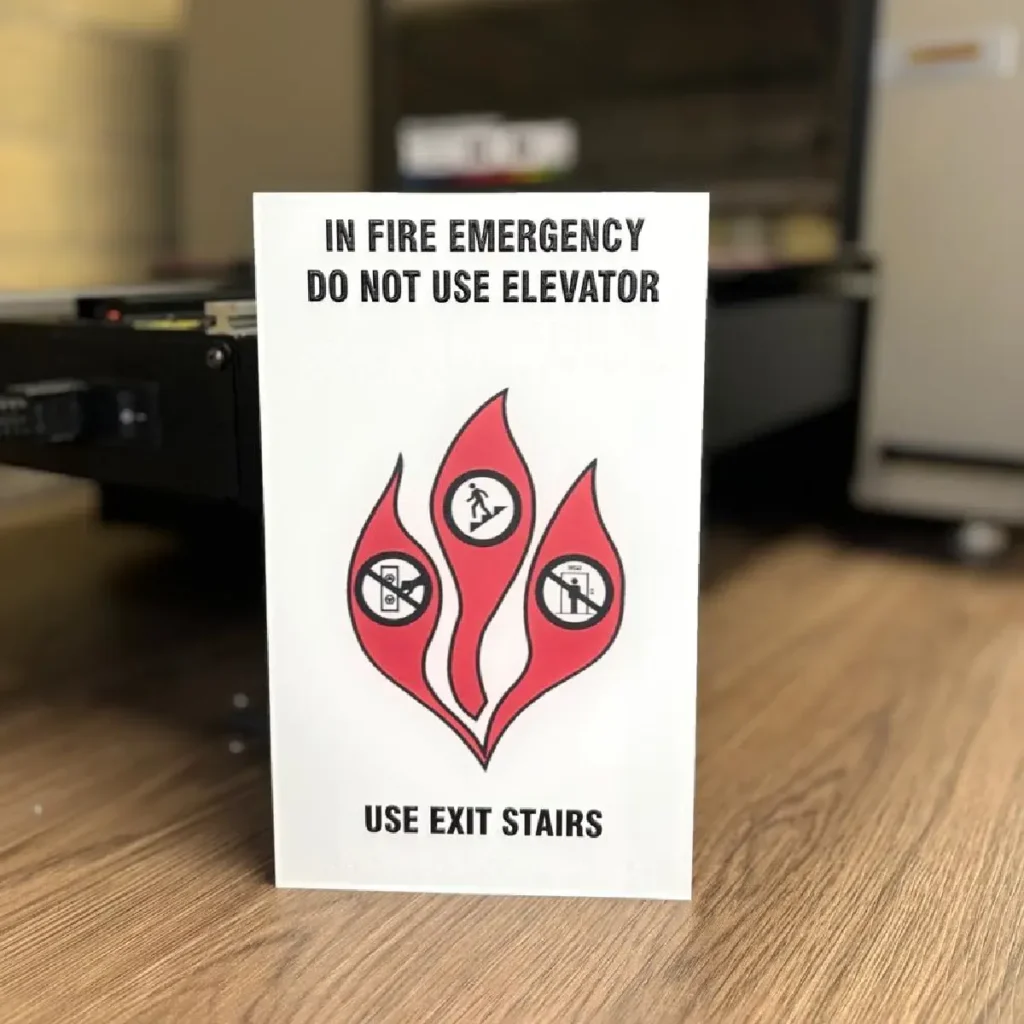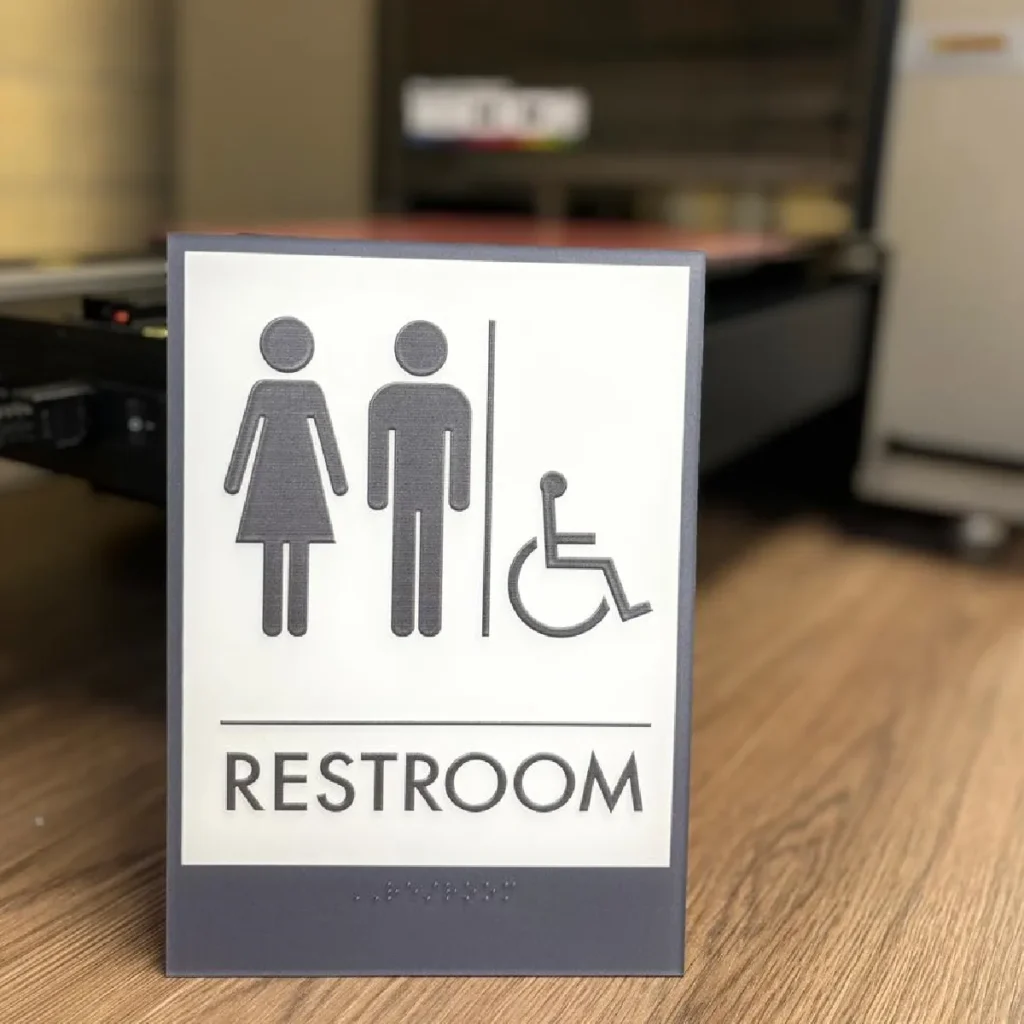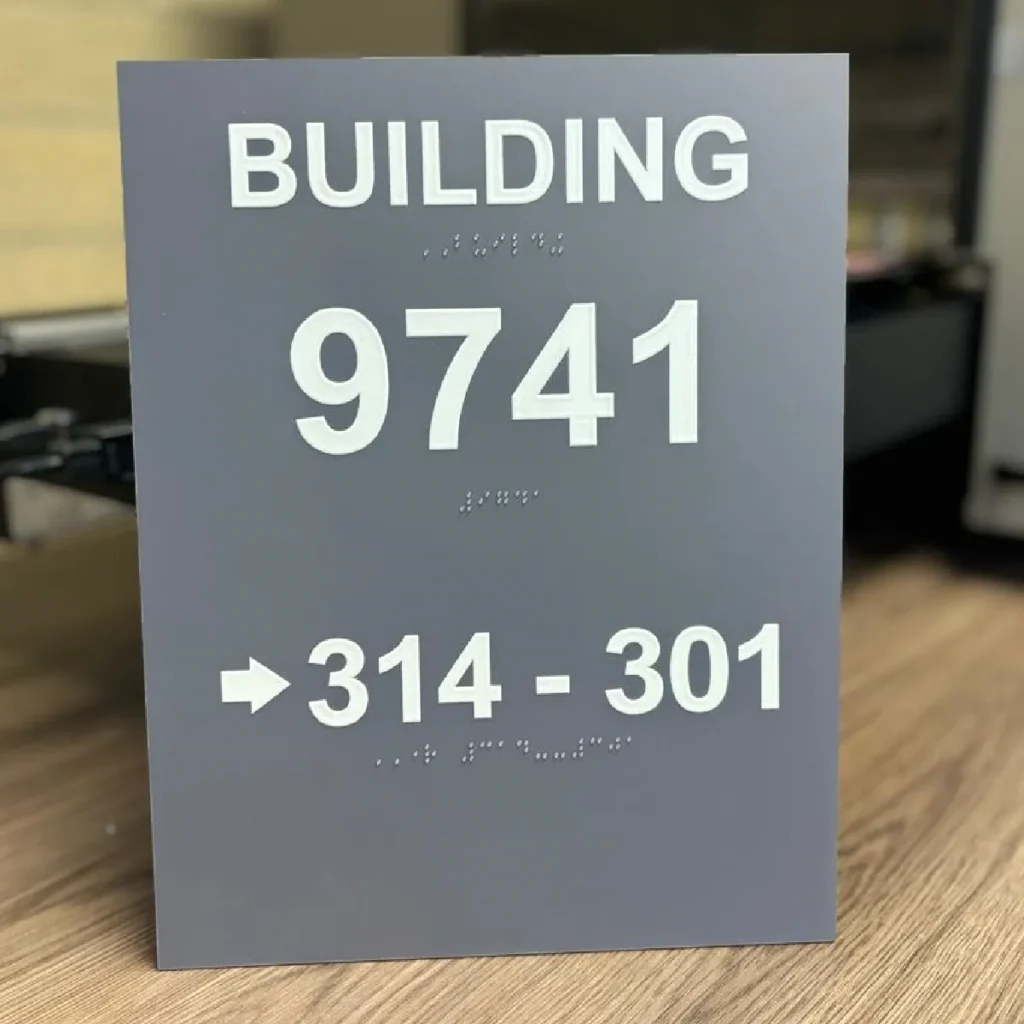Imagine entering a building and being unable to find the exits, restrooms, or offices because there are no clear signs to guide you. Now imagine having a visual or hearing impairment, making that situation even more complicated. This is where ADA Signage comes into play. But what exactly is it, and why is it so important in the United States? Let’s find out.
What is ADA Signage?
ADA Signage refers to signage that complies with accessibility standards established by the Americans with Disabilities Act (ADA). This law, enacted in 1990, aims to ensure that people with disabilities can access public and private spaces without barriers. In summary, ADA Signage consists of signs that help people navigate a building or public space, whether through text, symbols, or even the use of braille.
Key Elements of ADA Signage
To comply with ADA standards, signs must follow certain guidelines. Here are some of the most important ones:
- Braille: Many signs include braille text so that individuals with visual impairments can read them.
- Color Contrast: Colors must be contrasting so that the sign is easy to read, even for those with vision problems.
- Height and Location: Signs must be placed at an accessible height for individuals in wheelchairs or with mobility impairments.
- Font Size: The law sets a minimum font size to ensure the sign is visible from a certain distance.
Why is ADA Signage Important?
Proper signage not only helps comply with the law but also creates an inclusive and accessible environment for everyone. Here are some key reasons why it is important:
- Accessibility for All: Individuals with disabilities, such as blindness or reduced mobility, rely on this signage to navigate independently.
- Legal Compliance: Businesses and public buildings must adhere to ADA regulations. Failure to do so may result in legal penalties, including fines and lawsuits.
- Safety: Signs help people find emergency exits, accessible restrooms, and other important areas in critical moments.
Technologies Used in ADA Signage
With technological advances, there are now various ways to make signage more accessible and durable. One of the most popular methods is UV printing.
UV printing is an advanced printing method that uses ultraviolet light to dry or cure ink while printing. This type of printing has several advantages for ADA Signage:
- Durability: UV-printed signs are more resistant to weather and wear, making them ideal for outdoor use.
- High-Quality Image: The details of letters and symbols are sharper, enhancing legibility.
- Customization: It allows for the creation of customized signs that meet the specific needs of each space.
Benefits of Complying with ADA Signage
Meeting the requirements of ADA Signage is not only a legal obligation but also brings a range of practical and social benefits:
- Increased Inclusion: Businesses and public buildings with appropriate signage ensure that their facilities are accessible to everyone, enhancing user experience.
- Better Public Image: Organizations that prioritize accessibility are viewed as more inclusive and responsible.
- Risk Reduction: Compliance with the ADA helps avoid penalties and lawsuits that can be costly.
Conclusion: The Importance of ADA Signage in Daily Life
ADA Signage is not just a set of rules; it is a vital tool for individuals with disabilities to move easily and safely in any space. Whether in a hospital, shopping center, or office building, these signs ensure that everyone, regardless of their abilities, can access services and navigate independently.
Have you ever wondered what your life would be like if you couldn’t easily find your way in the places you visit? For many people, this is a daily reality, and ADA Signage is a key solution to overcoming this challenge.



